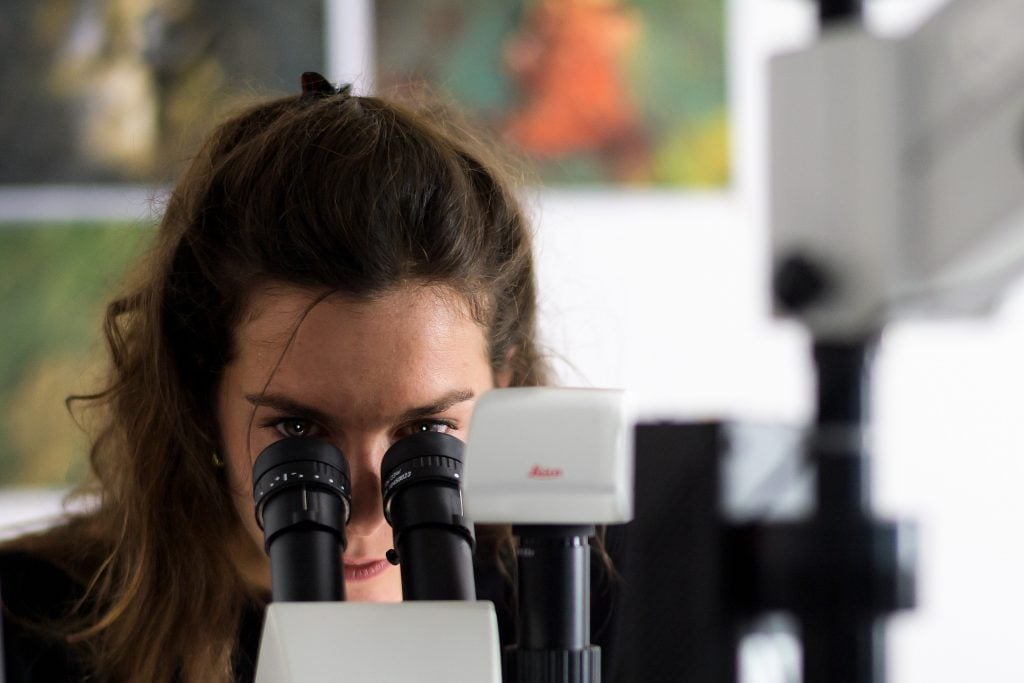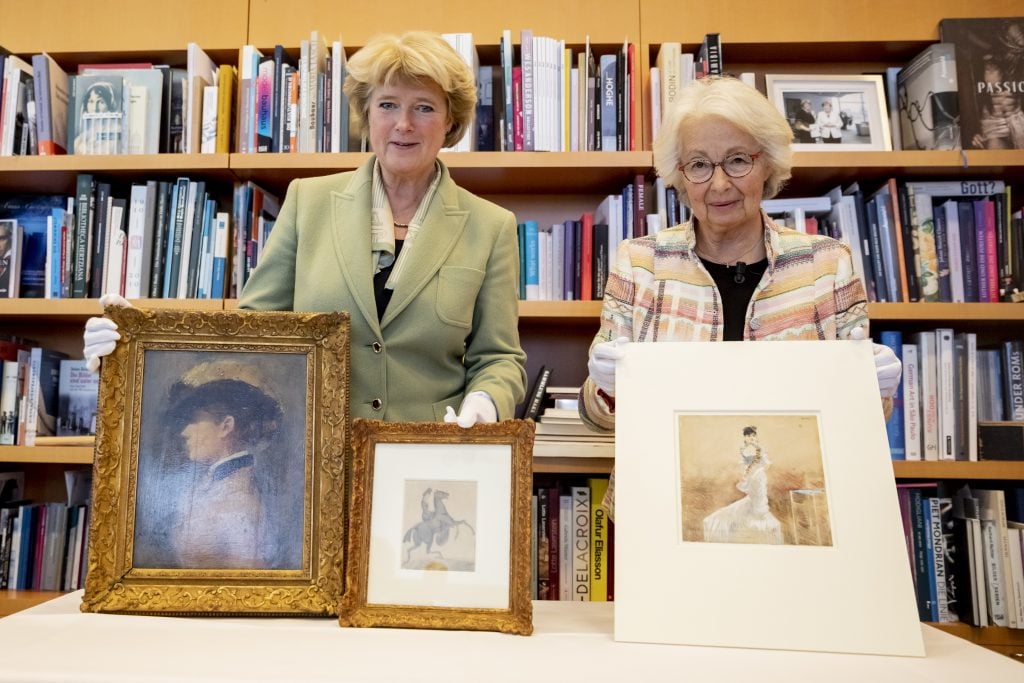Law & Politics
A Drawing Believed to Be the Final Nazi-Looted Artwork in the Gurlitt Collection Has Been Returned to Its Rightful Owners
The provenance of some 1,000 artworks from the notorious collection still remain unknown.

The provenance of some 1,000 artworks from the notorious collection still remain unknown.

Germany has restituted the 14th and what is believed to be final work of art from the notorious trove of Cornelius Gurlitt, whose art-dealer father, Hildebrand, worked with the Nazis beginning in 1938 to acquire works under duress from Jewish collectors.
The latest artwork to be returned to the heirs of its rightful owner is a circa 1840 drawing by German artist Carl Spitzweg titled Das Klavierspiel (Piano Playing). It originally belonged to Henri Hinrichsen, a Jewish music publisher.
A German Lost Art Foundation report found that the work “was seized due to Nazi persecution” by the Gestapo in 1939. A year later, Hildebrand Gurlitt purchased the drawing.
The dealer deposited payment in Hinrichsen’s bank account, but it was legally blocked and Hinrichsen was unable to access the funds. He was subsequently murdered at Auschwitz in September 1942.
Authorities discovered Gurlitt’s hidden trove of 1,590 artworks in 2012, during a two-year tax investigation. Concerns over the provenance of the collection—which included works by artists such as Claude Monet, Pierre-Auguste Renoir, Édouard Manet, Paul Klee, Otto Dix, and Max Ernst—were raised immediately, given Hildebrand Gurlitt’s Nazi ties.

Carl Spitzweg, Das Klavierspiel (Piano Playing) (1840). Photo courtesy of the Augsburg Public Prosecutor’s Office.
Earlier efforts to track down the works were stymied by Gurlitt’s widowed mother, Helene Gurlitt, who lied to authorities in 1966, claiming that the entire collection was destroyed during the 1945 bombing of Dresden.
Upon Gurlitt’s death in 2014, he left his art holdings to Switzerland’s Kunstmuseum Bern, which vowed to return any stolen artworks. Since 2016, the German Lost Art Foundation, a government agency, has handled investigation into the collection’s provenance. Despite suspicions that as many as 500 pieces had suspicious provenances, only 14 works were definitively linked to the Nazis, and have all now been returned.
“Behind every one of these pictures stands a human, tragic fate such as that of Auschwitz victim Dr. Henri Hinrichsen,” German culture minister Monika Grütters said in a statement. “We cannot make up for this severe suffering, but we are trying with the appraisal of Nazi art looting to make a contribution to historical justice and fulfill our moral responsibility.”

Monika Grütters, Germany’s minister of culture, returns three works of art identified as Nazi looted art to Francine Kahn. Photo by Christoph Soeder/dpa/picture alliance via Getty Images.
In the case of the Spitzweg, Germany has recommended the drawing be returned to the Hinrichsen family since 2014, but the drawn-out restitution process nevertheless took years to complete.
Hinrichsen’s granddaughter, Martha, who had sought recovery of the work, died in 2016, according to the Art Newspaper. The complexities of succession in the large family was part of the reason for the delay of the work’s return, according to Der Spiegel.
The drawing is now in possession of Christie’s at the request of Hinrichsen’s descendants. The auction house has not commented on the potential sale of the work.
Spitzweg’s record at auction for a work on paper is $56,026 (€46,250), according to the Artnet Price Database.